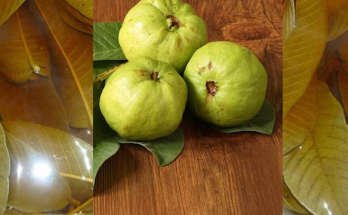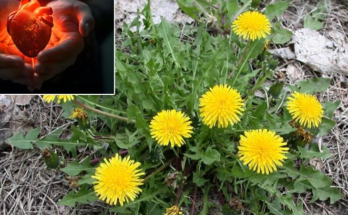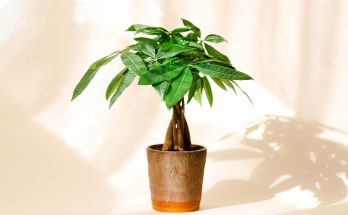When I started writing this article, my first draft was titled The Seven Habits of Highly Effective Gardeners, an obvious riff on the self-help bestselling classic. But the more I kept writing, the more I kept thinking of my own habits – both as a gardener and general life habits.
Theoretically, I know what good habits I’m supposed to adopt. And it’s easy to see when I’m doing things right, because I’m getting the desired results.

What I have more trouble with is figuring out how to break bad habits. Surprisingly, it’s quite tricky to separate the good from the bad habits. Sometimes, I need someone else to point out my bad habits for the coin to drop. That lightbulb duh! moment. The “Riiight! Why didn’t I think of that?” moment.
So I went back to the drawing board to reframe this article. What if I were to talk about some of my bad gardening habits? Some of these I’ve managed to break along the way. Others, I’m still working on.
Wouldn’t that be more helpful, just in case any of you are also stuck in these loops?
Bad habit #1: Trusting what I see in stores.
A bad gardening habit that I struggled to break for years was believing that if I bought something from a garden center or plant nursery, it would grow perfectly in my garden.
They’re specialists who know so much more about plants and gardening than I ever will, right? Yeah, this line of thinking led me to buy plants that did not do well at all. As in, died in a month. Or took up so much headspace that I just pulled them out voluntarily.
Let me make it clear: I don’t believe in a conspiracy theory that BigHorti is out to get my money. But I believe that they’ll stock everything they can sell.

That includes:
- tropical plants that won’t survive the winter in my area;
- annuals labeled as perennials;
- and plants that have the potential to take over a garden if left unchecked.
Keep in mind that the retailers are not the growers. The plants they sell aren’t grown locally but bought from growers or wholesalers from all over the country based on demand and trends. (This is not always the case. Smaller, local nurseries often grow a lot of what they sell or source from growers near them. Ask them about what they grow and where they get the things they don’t grow themselves.)
I blame us as consumers too. Nurseries stock what’s in demand. And if customers, reeled in by cherry-picked information from social media and YouTube, demand a plant, who’s to say the nursery shouldn’t facilitate that sale?
No matter how inappropriate for a certain climate that plant may be. What the customer wants, the customer gets.
Break this bad habit.
Do your research first, and shop with a list. Treat plant shopping as you would grocery shopping.
Start with a meal plan. What are you trying to achieve with the planting?
Then figure out your recipe. In this case, that would take into consideration your garden set-up, including your (micro)climate and the layout of your garden.

Then break down the ingredients you need to make that happen. Is it plants for borders? Plants that do well in the shade? Plants for shallow soil?
Once you have some ideas, you can look on the website of the nursery to see if they stock these plants. Or simply pay them a visit, but stick to your shopping list.
Bad habit #2: Leaving bare soil exposed.
For me, this bad habit was influenced by the gardens I saw when I was growing up. Either the gardens of relatives or professionally maintained gardens of whatever parks we would visit.
They looked like little islands of flowers surrounded by a “sea” of bare soil. If this is how adults gardened, surely that’s how my garden should look like, right?
No, no, nope. Bare soil is the enemy in your garden.

It gets washed away by rain. Or it gets blown about by wind.
It gets bone dry in scorching heat.
It’s quickly overrun with plants that we may not want growing there.
Break this bad habit.
The easiest way to break this habit is to apply mulch. Just by adding a simple layer of commercial mulch – which usually means shredded bark or wood chips, conifer needles or nut husks – you can protect the soil underneath.
Mulching helps retain ground moisture and protects the roots of the plants from sudden temperature fluctuations.

But a more productive, greener and money-saving approach would be to plant green ground covers (aka living mulch) in your garden beds and borders. They grow on their own (unlike mulch) so you don’t have to replace them.
Some of them flower abundantly (such as this gorgeous creeping thyme carpet), which is an extra boon for pollinators. Plus, green all over looks much better than brown, in my opinion.

Bad habit # 3: Getting the garden squeaky clean in the cold months.
Another bad gardening habit that I picked up by observing other people … who didn’t know better themselves.
Tidying up the garden at the end of the growing season is not the good gardening habit that many of us think it is.

We obviously need to remove diseased plant material. So if you have black spot on roses or blight on potatoes, by all means clean it up and discard the plant material. Otherwise, just let it be until spring comes around.
But why?
Simply because what we see as garden debris is, in fact, home to the wildlife in our garden over the winter months.

Ladybugs – the only sustainable solution to the aphid problem – hibernate in piles of dead leaves. So do pill bugs, which will then help break down your compost. Not to mention the pollinators, frogs, spiders, moths and butterflies that all need a habitat to overwinter in.
Break this bad habit.
My colleague, Cheryl, wrote all about what to do with leaves (aka ‘gardener’s gold’) in the fall.
It’s also common practice to prune perennials in the fall. Here’s why you shouldn’t, both for the sake of the insects and the health of your plants.

And if you have corners that have collected some organic debris, wait until the last frost next year to clean them up. (Do you really need to clean them up at all, if they don’t pose a health hazard?)
Bad habit #4: Not cleaning my gardening tools.
Uff, this one is a bad gardening habit that I’m still working on breaking. I’ve made a lot of progress, in that I probably clean and disinfect my tools once a week at the height of gardening season. But I should probably do it more.

I get in such a flow when I’m gardening that cleaning my tools is not exactly a priority. But I should, especially when I’m pruning plants that are susceptible to diseases (looking at you, roses!) or after I’m done cleaning up a major problem, such as blighted tomatoes.
Break this bad habit.
I wipe the blades of secateurs with a simple soapy water solution at the end of a day of gardening. I also keep a roll of paper towels (or the washable, reusable kind) and a spray bottle of rubbing alcohol in my tool basket. Once I’m done with using the shears for the day, I give them a quick wipe down and let them air dry before I put them away.

The turning point for me – and I don’t mean to sound pretentious – was when I finally invested in better, more expensive gardening tools. If I paid this much for a pair of Felco pruners, you bet I’m going to do my best to keep them squeaky clean.
Bad habit #5: Expecting trend-defined perfection from nature.
My bad habit here, with the potential of becoming toxic, was thumbing through glossy gardening magazines, scrolling through Instagram accounts and binging on YouTube videos that made me feel like my garden was “less than.”

Not as pretty.
Not as large.
Certainly not as manicured as that TV personality’s garden. Never mind that said TV gardener has a staff of twelve full-time employees helping him.
I had a serious case of “comparison is the thief of joy.”
Break this bad habit.
Here’s what worked for me in breaking this unhealthy habit.
I started shifting my perspective from “what needs to be done in order to [fill in the blanks with aspirational goals]” to “here is what I’m enjoying in the moment.”
Noticing the hum of the bees and the birds, or how the angle of the sun changes from one week to another, or how well the yellow of the Rudbeckia complements the blue of the Eryngium.

Just by repeating this simple exercise, my mindset shifted.
Gradually, but long-term sustainably. Gardening was no longer a list of chores I needed to conquer: planning, pruning, weeding, watering, dealing with pests. No longer a place that needed to be magazine-worthy to be worth it.
Instead, it turned into a place I step into, at the end of a long day or a long week or after a particularly stressful meeting. Because I believe that, above all else, gardening should be fun. And just like I don’t cave in when other people impose their idea of fun on me (no, thanks I won’t go mini golfing), I’ve stopped giving in on the idea of what my garden should be for me.
With it comes the realization that I like my garden the way nature shapes it, not the way trends dictate it should look.




Oh my goodness! a tremendous article dude. Thank you Nonetheless I am experiencing subject with ur rss . Don’t know why Unable to subscribe to it. Is there anybody getting equivalent rss drawback? Anyone who is aware of kindly respond. Thnkx
After I originally commented I clicked the -Notify me when new feedback are added- checkbox and now every time a comment is added I get four emails with the identical comment. Is there any means you can remove me from that service? Thanks!
It’s really a great and useful piece of info. I am happy that you simply shared this useful information with us. Please stay us informed like this. Thank you for sharing.
I’m not that much of a online reader to be honest but your blogs really nice, keep it up! I’ll go ahead and bookmark your site to come back in the future. All the best
Have you ever thought about adding a little bit more than just your articles? I mean, what you say is valuable and all. However just imagine if you added some great visuals or videos to give your posts more, “pop”! Your content is excellent but with images and video clips, this website could undeniably be one of the most beneficial in its niche. Excellent blog!
I know of the fact that nowadays, more and more people are attracted to surveillance cameras and the industry of images. However, really being a photographer, you must first expend so much time period deciding the exact model of video camera to buy and also moving out of store to store just so you may buy the most economical camera of the brand you have decided to select. But it would not end at this time there. You also have to think about whether you can purchase a digital photographic camera extended warranty. Many thanks for the good guidelines I gained from your site.
I think other web site proprietors should take this site as an model, very clean and great user genial style and design, as well as the content. You are an expert in this topic!
Would you be inquisitive about exchanging links?
Heya i am for the first time here. I found this board and I to find It really helpful & it helped me out much. I hope to provide one thing back and help others like you aided me.
I’m not sure where you are getting your information, but good topic. I needs to spend some time learning much more or understanding more. Thanks for fantastic info I was looking for this information for my mission.
Great write-up, I’m normal visitor of one’s blog, maintain up the nice operate, and It is going to be a regular visitor for a lengthy time.
I’m impressed, I need to say. Actually hardly ever do I encounter a weblog that’s each educative and entertaining, and let me tell you, you may have hit the nail on the head. Your idea is outstanding; the problem is something that not sufficient persons are speaking intelligently about. I am very joyful that I stumbled throughout this in my seek for one thing referring to this.